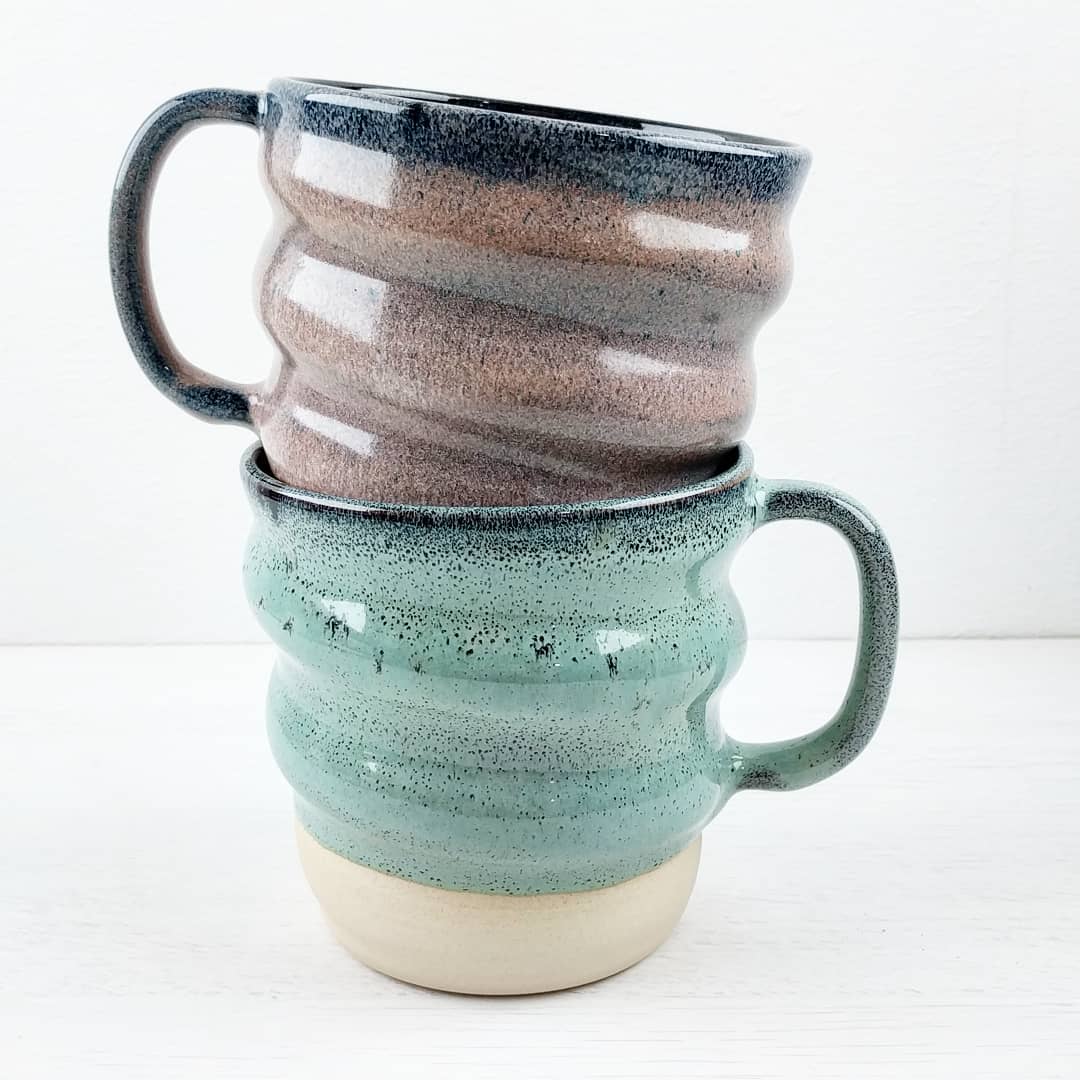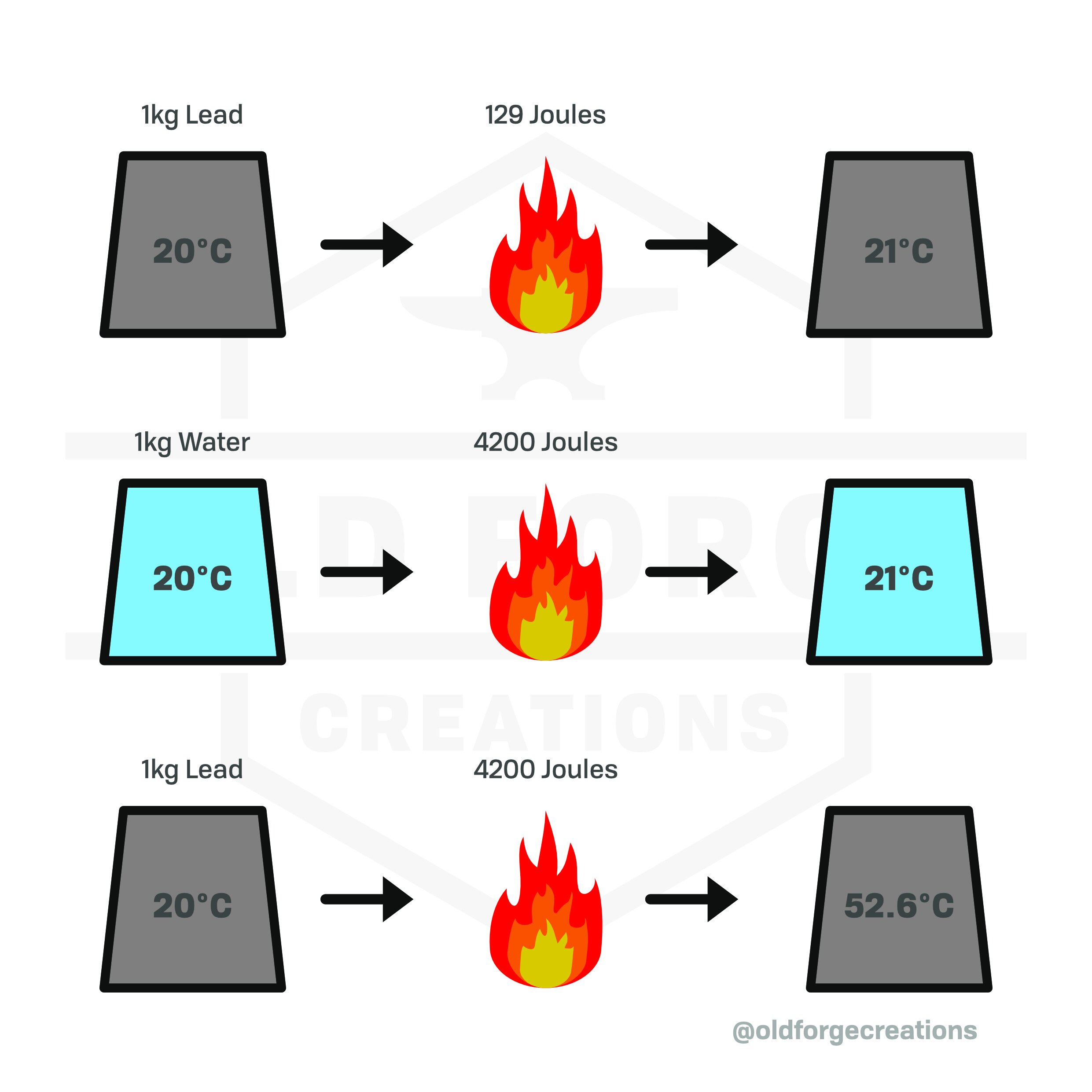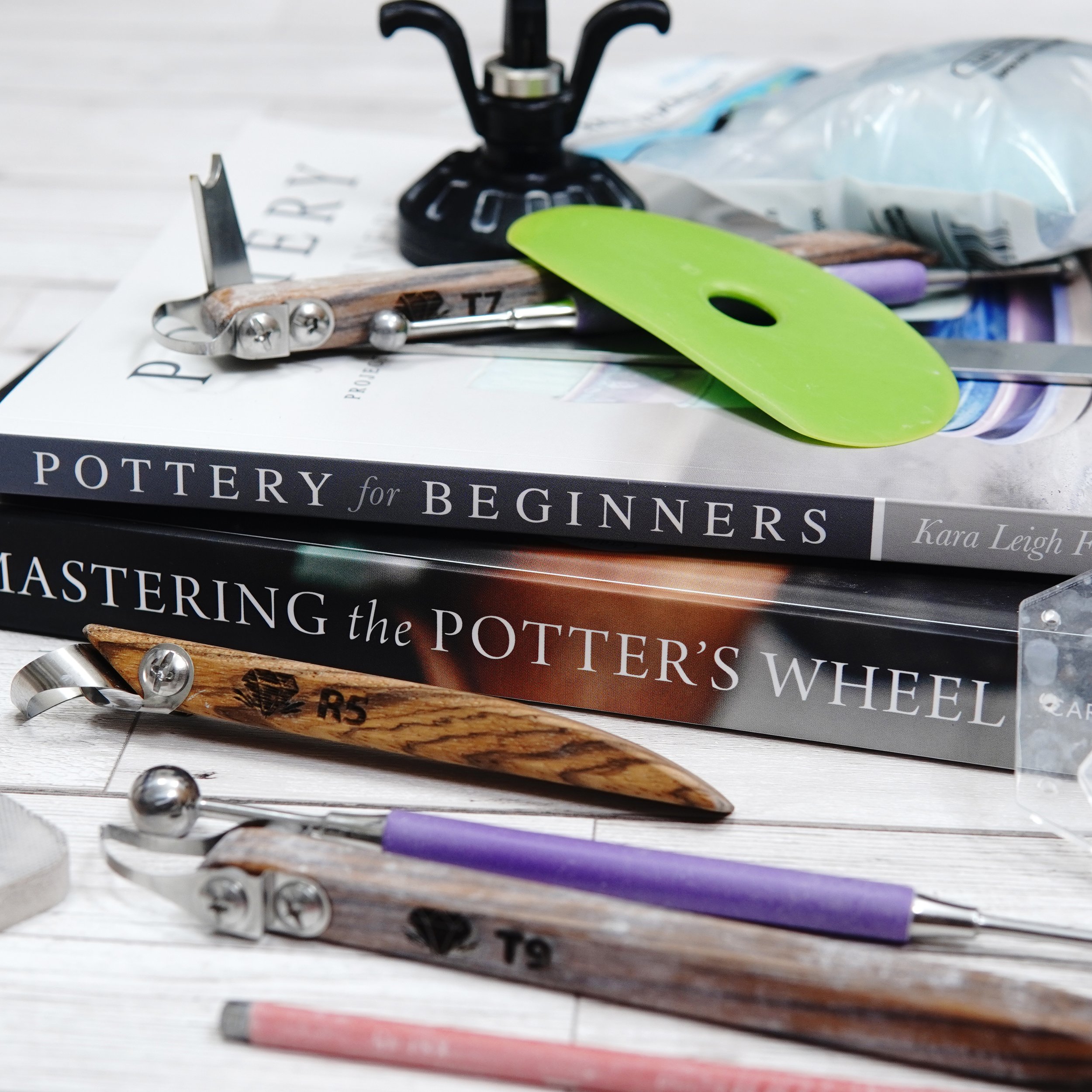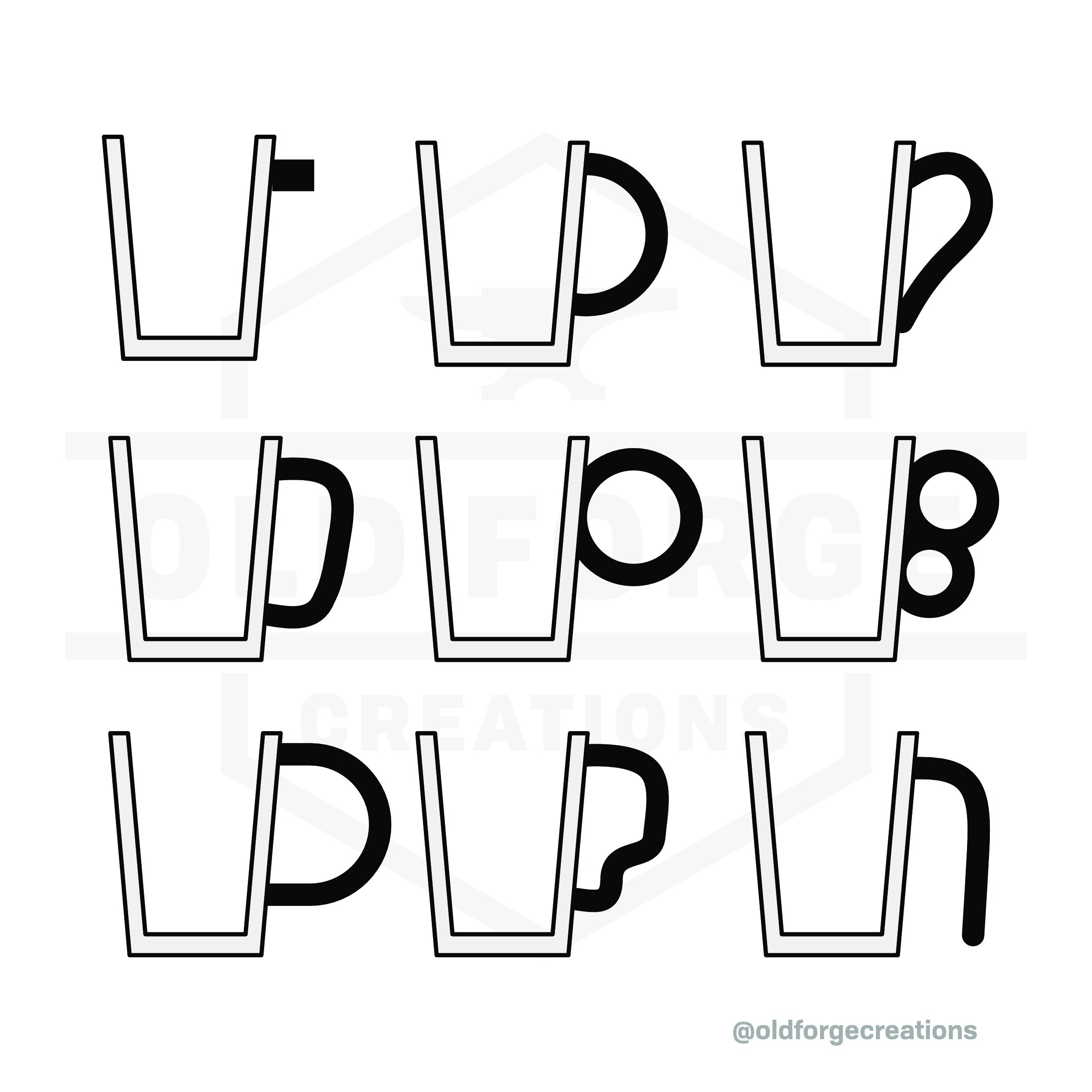How Efficient Are Electric Kilns?
Kilns use a lot of energy and produce a lot of heat, but how much of that energy is going to useful work and how much is lost due to inefficiency?
The short answer is that it depends and that I don’t know. But there is a reasonably precise way of looking at the question at least, which gives a sensible answer.
Firstly, some basics.
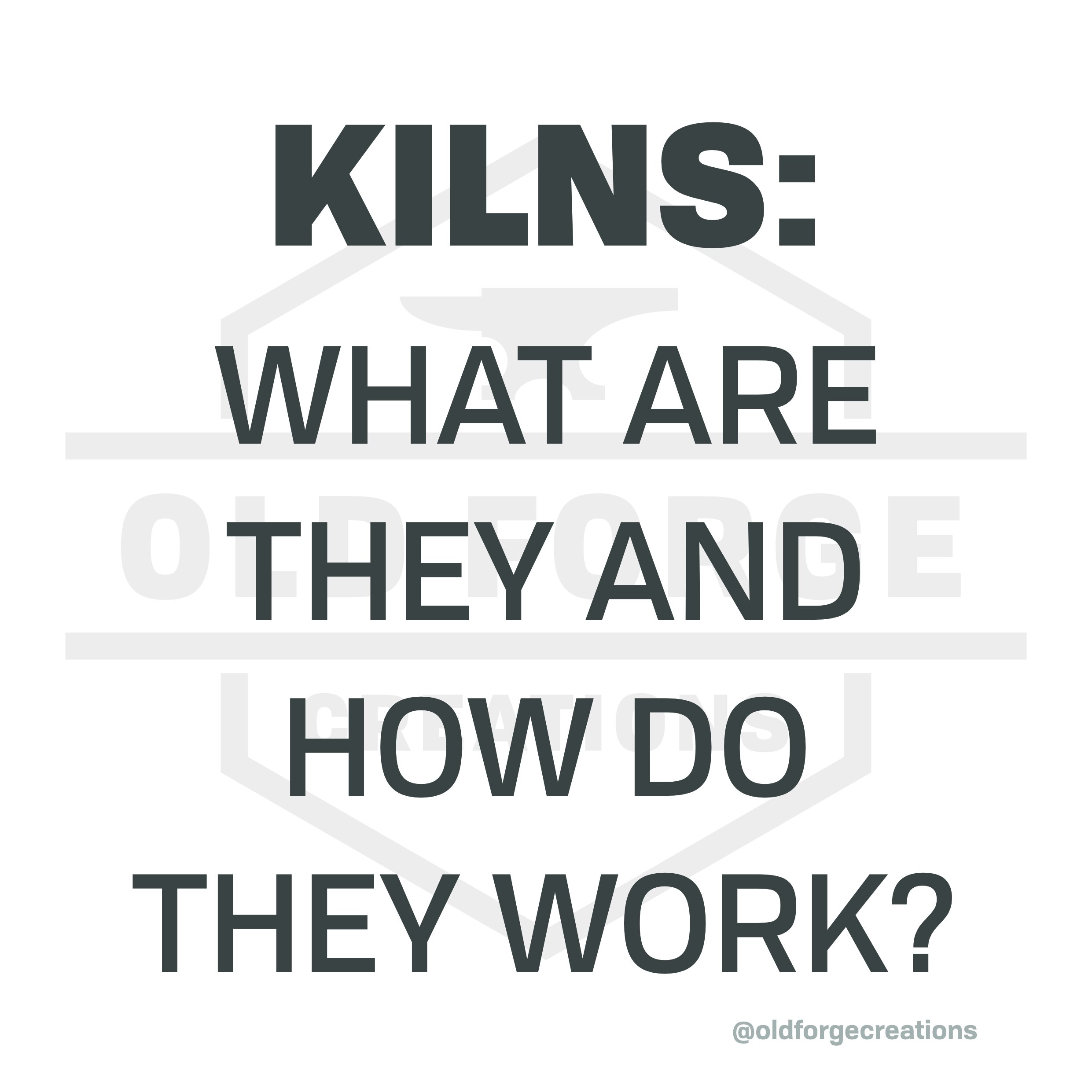
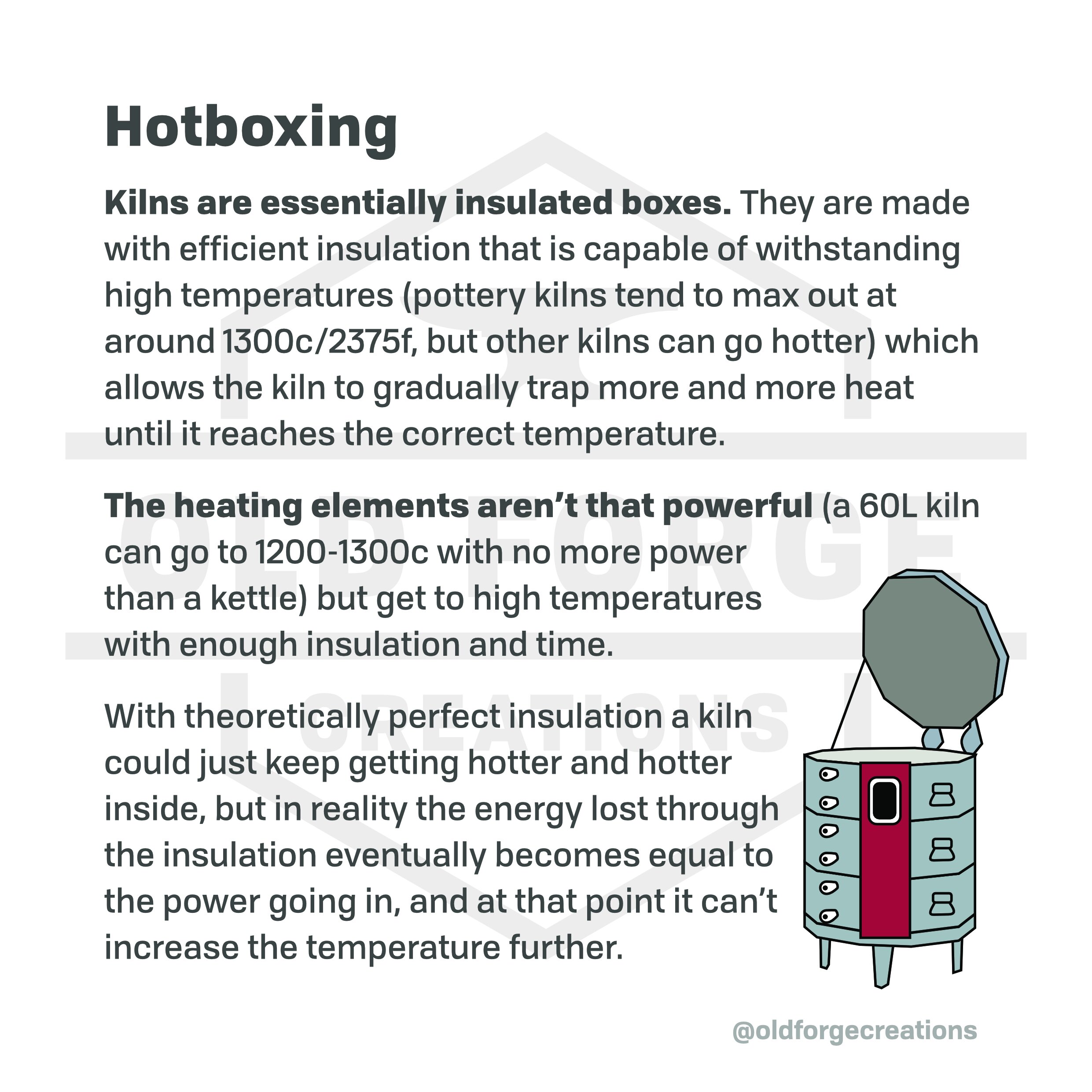
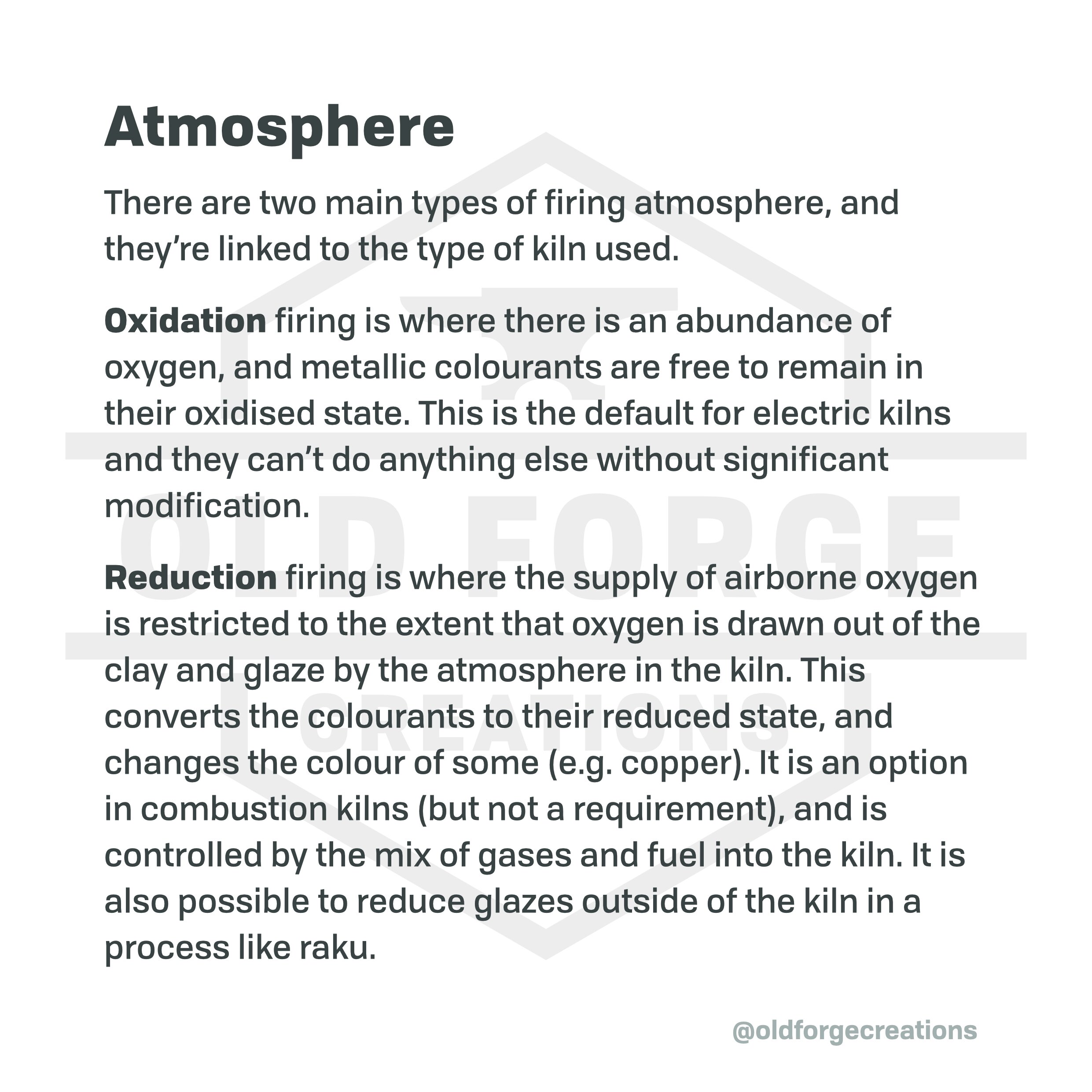
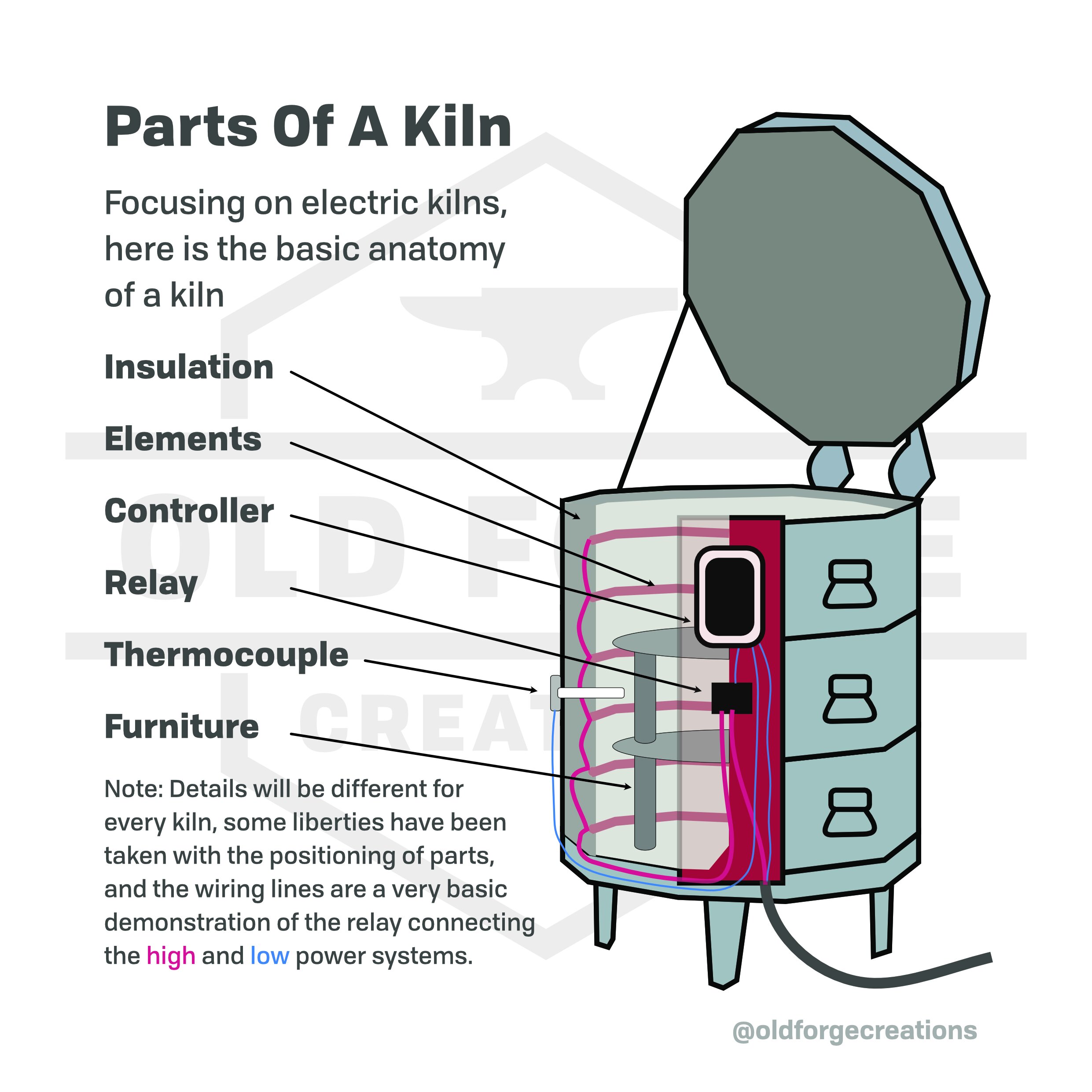
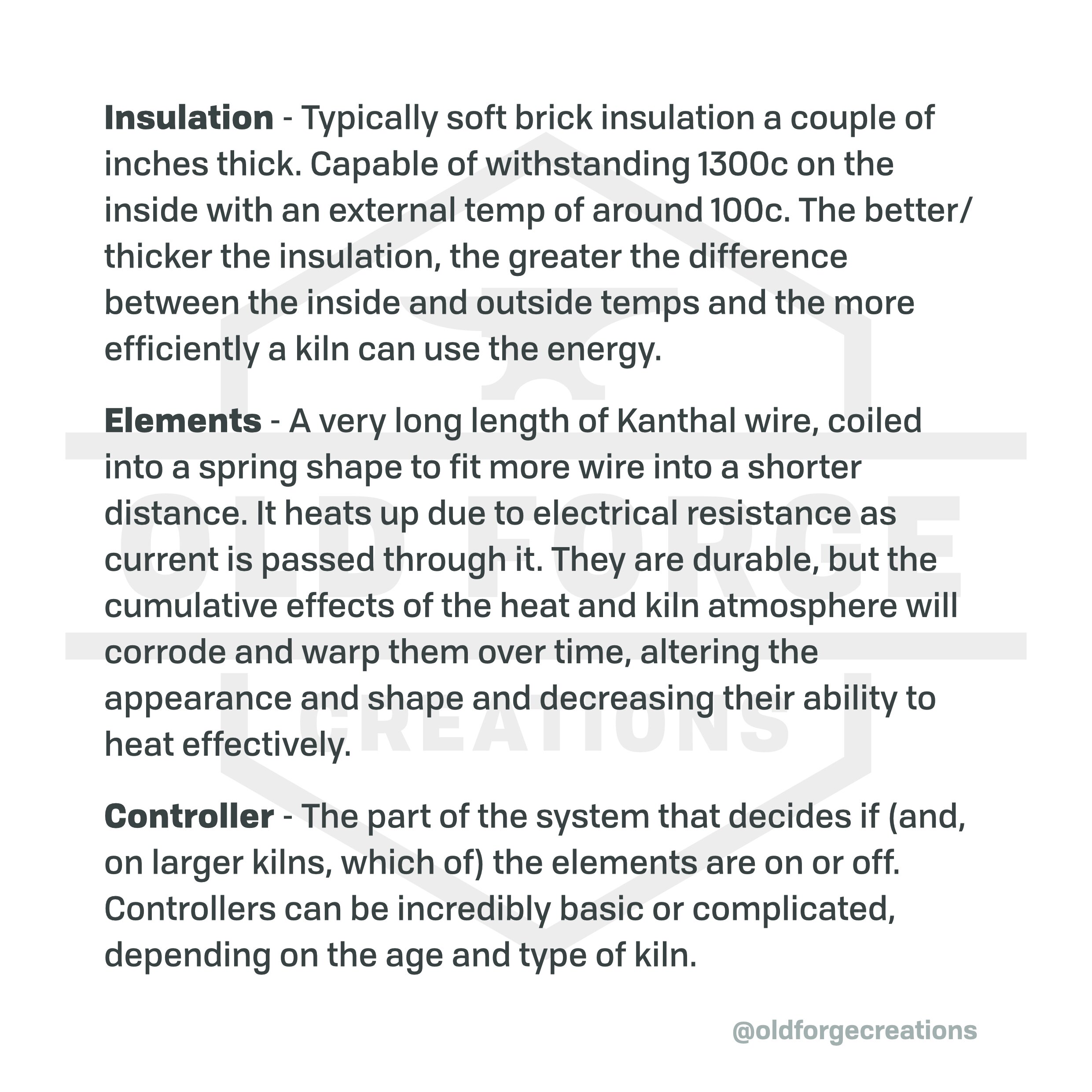
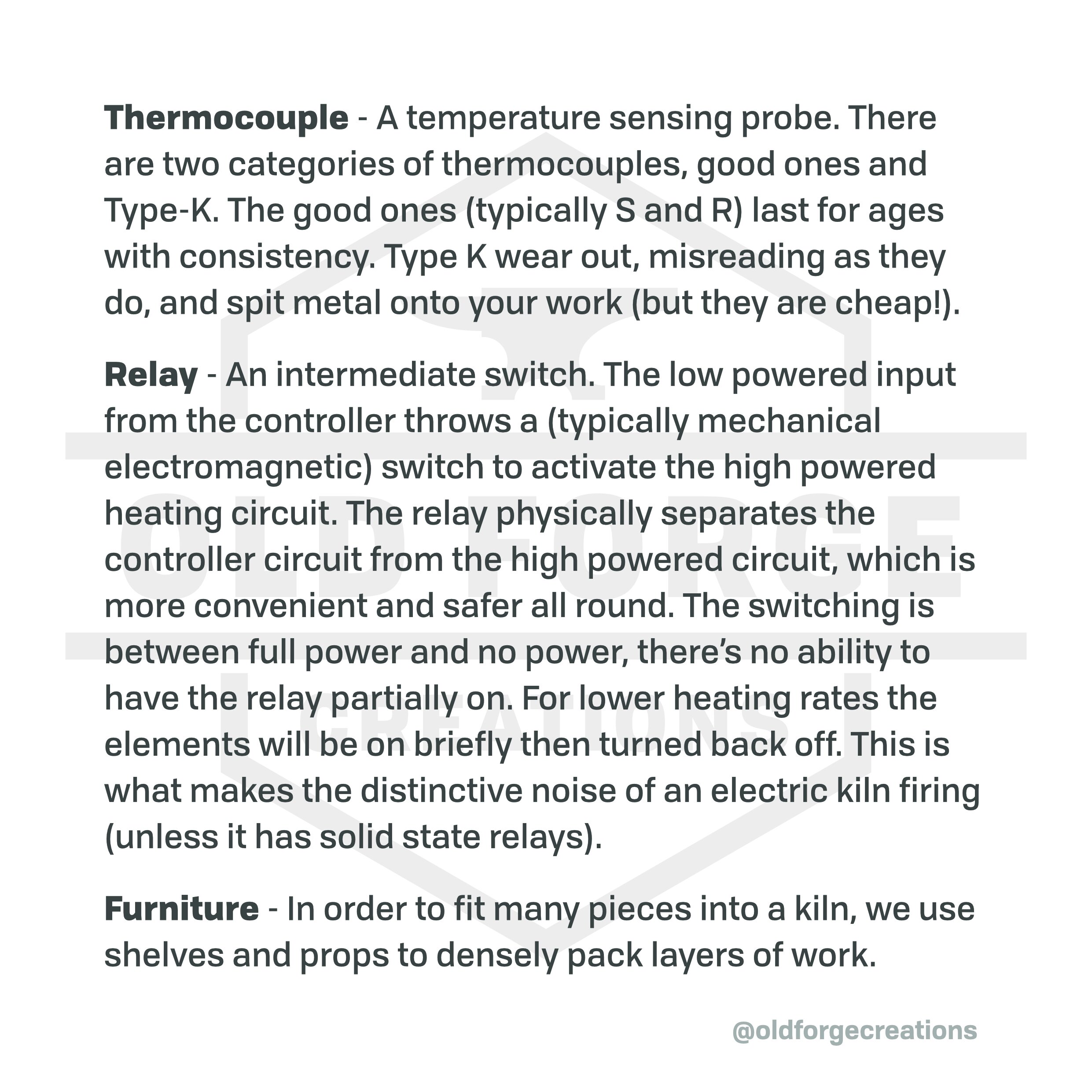
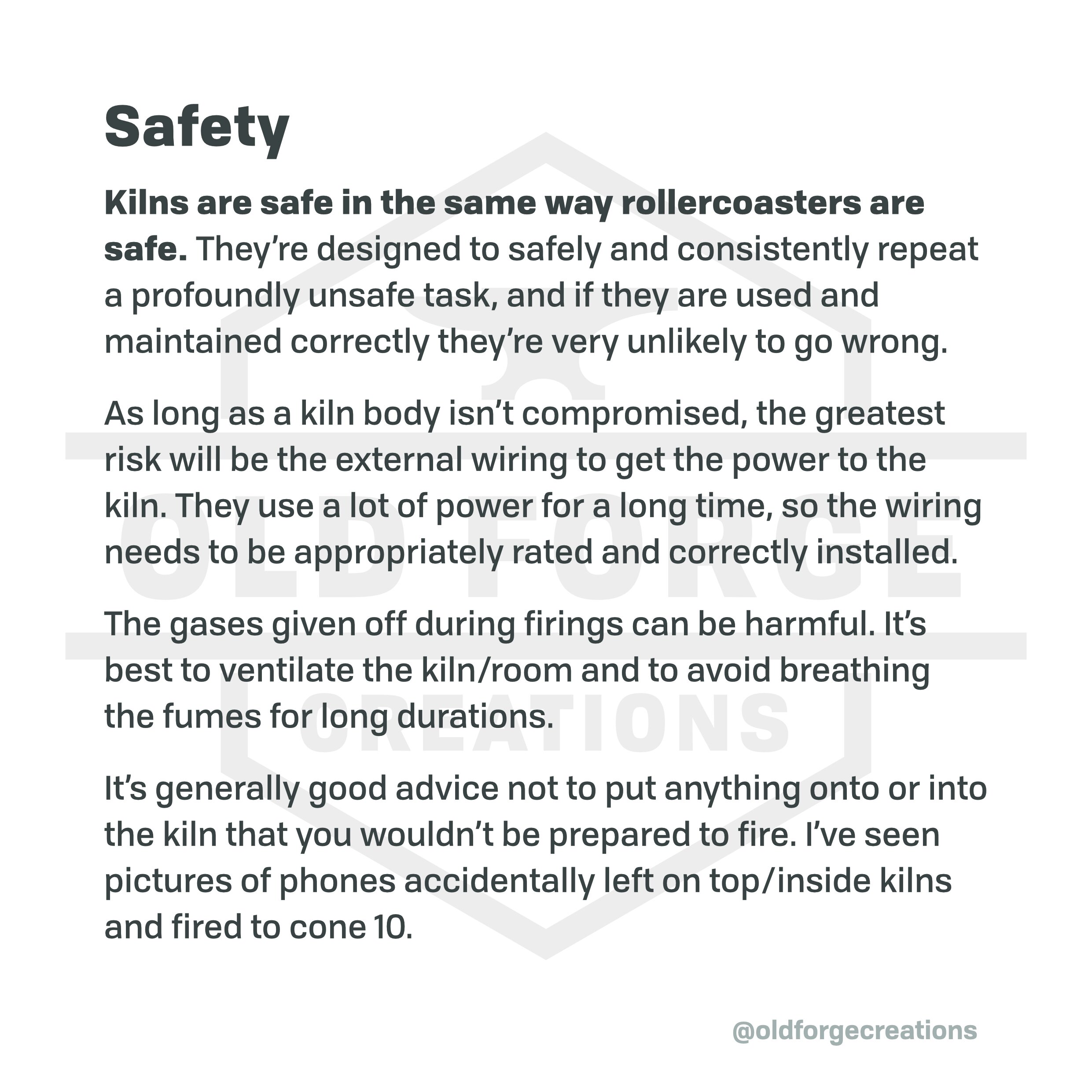
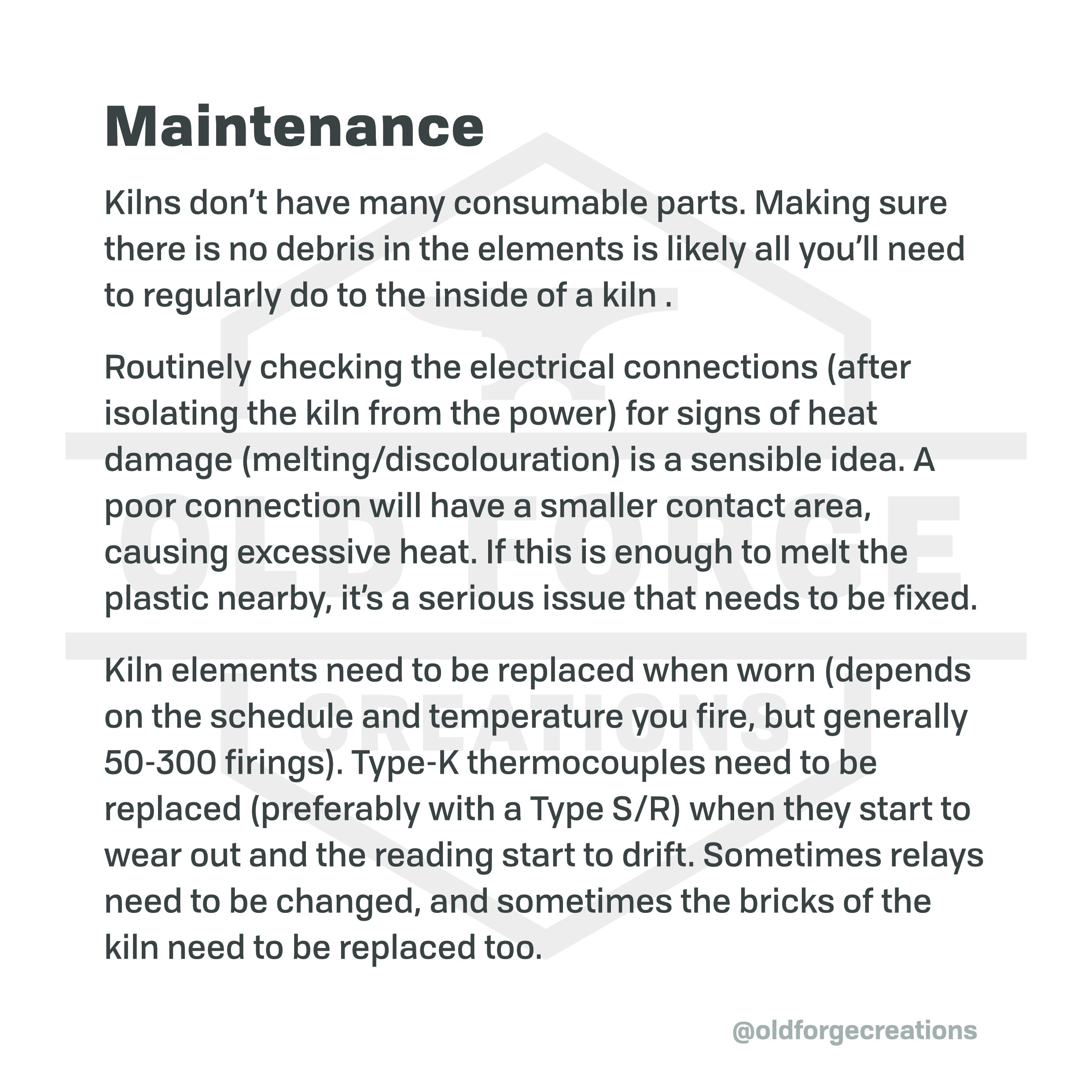

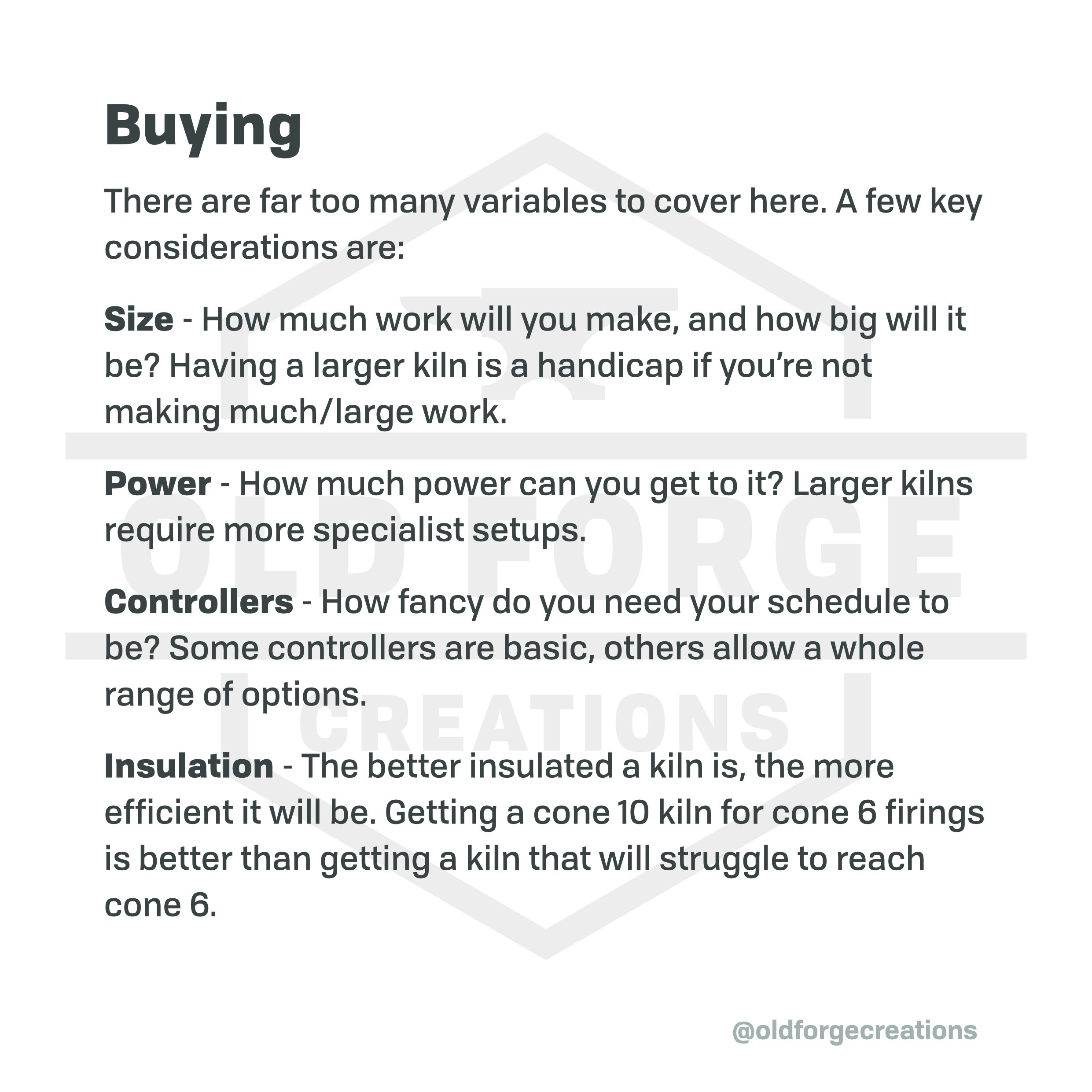
Kilns are boxes made of incredibly efficient insulation. You can put heat in and generally speaking it will stay in there. The insulation isn’t perfect though and, as the temperature climbs, heat will start to escape. The outer wall will begin to warm up and lose heat through radiation and convection. Air will be warmed inside the kiln and will take the heat with it, if it’s able to leave (a much bigger factor in combustion kilns, where airflow is required). The rate at which heat is lost will increase as the temperature inside rises, so the efficiency of the energy use is decreasing as temperature is increasing.
An easy comparison would be driving a car in a straight line. A car will have a top speed that’s dictated by the engine power and the aerodynamics. At a standing start, (essentially) all of the engine power goes into acceleration. As your speed increases, the rate of acceleration decreases due to more and more energy being lost to air resistance/drag. There is a point where the drag is equal to the maximum power that the engine can provide, and the most you can do at that point is maintain speed. If you’ve ever driven an underpowered car at motorway speeds you’ll know first-hand what this feels like, but it’s true of any car. When a Veyron claims a top speed of 410km/h, they just drove it at full power in a straight line until it couldn’t accelerate further. This high top speed will translate into it reaching motorway speeds at a higher efficiency than a car that’s near its limit.
That’s very similar to how a kiln can be limited to a maximum temperature. Kilns have a capacity, a quality of insulation, and a given element power. The first two are the equivalent of the drag, and the element power is the equivalent of the engine. A bigger kiln or a less effective insulation means the possible top temperature decreases, and more powerful elements means the top temperature increases. Once a kiln reached this top temperature, it would be on 100% power but would be losing energy to the environment at the same rate. It wouldn’t be able to increase the temperature beyond this point.
Note though, that this temperature will probably be above cone 10. A kiln with a stated maximum of cone 6 might hit cone 8-9 before it reached its absolute maximum, whereas a kiln rated for cone 10 would have enough insulation and power to go at least a few cones hotter (it might not appreciate doing so though!). The more capable it is of going hotter, the less it will struggle to hit a given temperature.
There’s no reason that a pottery kiln manufacturer couldn’t overspec a kiln to make it capable of reaching cone 10 with near zero heat loss, but it’s not cost effective. In general, an electric kiln will have enough insulation and element power that they’re starting to struggle when they’re near their maximum rated temperature. This means that when a kiln is near peak firing temp it will be starting to lose quite a lot of heat and will be increasingly inefficient. This is more noticeable when elements and bricks become older and the kiln can’t deliver as much heat or hold quite as much in.
It gets slightly more interesting though. With a car, the work being done is the movement of the car’s mass and the wasted energy is lost primarily as heat due to friction. With a kiln, the heat is the productive work as well as the waste.
Why So Hot?
This poses an interesting question, and it’s one that I hadn’t really considered until I took the CMW Clay course. Why do we need to heat the pots up to such a high temperature anyway?
In a firing, we take a load of work from room temperature to glowing hot, then back to room temperature. Essentially 100% of the energy ends up being lost to the surroundings. There’s a minor change in the structure of the pots, but other than that the energy seems to be largely wasted.
The glaze melts in the last 100°C or so of the firing, but we can change the chemistry to bring that temperature much lower if we wanted. We can even make clays fully vitrify (melting the silica into liquid glass) at a lower temperature if we want. So why do we use all that energy to get to 1200-1300°C, just to let it all go again afterwards?
The answer is in the formation of mullite in the clay. Mullite starts to form as the clay is heated over around 1000°C, in the form of interlocking needle crystal structures. These give the clay body strength and structure. If you attempt to vitrify a piece without the mullite to maintain the shape, it might well collapse into a puddle as the silica becomes liquid. It would be more like sculpting a piece purely out of glaze and attempting to fire it.
This temperature can’t be adjusted in the same way that the vitrification temperature can. We have to fire our pieces to a high temperature if we want to form the mullite structure that allows it to vitrify without the risk of it collapsing.
Can we tell how much of the energy into the kiln is actually required for that?
Heatwork
It’s been a while since A-Level physics, so I should say at this point that I might be wrong about all of this.
When heating materials, there are a few material characteristics that have a big impact on the energy needed. The main one is a property called Specific Heat Capacity, which is when you just heat a material without changing it. There is the Latent Heat, which is the energy required or released in a state change (such as melting or solidifying). There will also be heat absorbed or released during chemical reactions.
Specific Heat Capacity
It takes a certain amount of energy to heat a material, and this is known as the Specific Heat Capacity (the technical symbol is a lower case c, but I’ll be using SHC as a clearer way to abbreviate it here). It’s expressed as a unit of energy per mass per temperature. So that could be Joules per Kilo per Degree (Kelvin/Celsius) or BTU per Pound per Degree (Fahrenheit), but it will work with any combination of units so long as you’re consistent with them.
There’s a lot of variation between materials, with some requiring far more energy. For example, Lead has a SHC of 129 J/kg/°C and water has a SHC of 4200 J/kg/°C. You need around 32x more energy to heat the same mass of water by the same temperature. And note, this is by mass rather than volume.
I don’t know the exact SHC of the types of ceramics we’re using, but from what I’ve read 800-1000 J/kg/°C seems like a reasonable range (or 0.8-1 kJ/kg/°C). I’ll take the midpoint of that range for these calculations.
Every kilo of work you put into a kiln will require around 0.9 kJ to heat it by one degree C (no, I will not be including conversions to archaic units)
From a starting kiln temp of 20°C, every kilo of ceramic material requires 1062 kJ to reach 1200°C or 1152 kJ to reach 1300°C.
A watt is a joule per second. A kilowatt is a thousand joules per second, or one kilojoule per second. A kilowatt hour (the preferred measure of electrical energy usage here) is just a kJ every second, for an hour. An hour is 3600 seconds, so a kWh is 3600 kJ.
This means it’s around 0.3 kWh per kilo of work to 1200°C and 0.32 kWh to 1300°C.
Side note: I love kWh as a unit. It’s both very intuitive and very silly. As you can see above, you’re taking a static unit of energy (joule) and turning it into a rate of energy (joule per second), then adding a different time unit to convert back into a static unit of energy (joule per second for an hour). It makes total sense in the context of household energy use (if you have a 3 kW heater and use if for an hour, you’ve used 3 kWh of energy), but it’s a bit like measuring distance in Sprint Minutes. An average sprint is around 7 meters per second, so a Sprint Minute would be 420m. The UK is around 965km vertically, which is approximately 2298 Sprint Minutes. Technically correct, but you could have just measured in meters.
Next, we would need to scale this SHC energy requirement up to a full kiln of work.
I worked on the assumption that I was putting around 10kg of work into the kiln (30 mugs at around 350g each).
Kiln shelves for my 75L Skutt (although I think the shelves are different to the ones provided in the US) are around 2kg each with the props being 200-300g each. This means around 10kg of kiln furniture for a typical load.
The kiln itself has a mass of 66kg, but not all of that heats up to 1200 degrees. There will be a temperature gradient through the insulation. The outside of the kiln gets warm, so I feel it’s pretty reasonable to think the average temperature of the kiln’s mass is at somewhere close to half the internal temp.
All told, that amounts to around 56300 kJ or 15.6 kWh of energy required for my kiln (half the mass) and contents (10kg work + 10kg furniture) to get to a peak temp of 1200°C, given a SHC of 0.9 kJ/kg/°C.
Latent Heat
Latent Heat is the additional energy involved in a state change. Most materials will continue to absorb/release energy without changing temperature when they reach a melting/freezing point. I believed this would be the case for the glass melting, but it seems that might not be the case. Either way, only a small fraction of our overall mass undergoes a state change (melts), so it wouldn’t be a big consideration regardless (I calculated it as less than 0.1 kWh, even if it was a requirement, so it’s a tiny part of the overall energy usage).
There is residual water and chemically bound water within the clay. Water has a fairly high latent heat, so this will take some energy when it evaporates. There isn’t a huge amount of water though, and it’s a one-time energy cost. If there was around 500g water to evaporate (5% of the weight of the work in my example), it would still only use 0.15kWh to do so (and would then leave the kiln, which would actually lower the overall energy needed).
I don’t know for sure, but I can’t see any reason to think that latent heat plays a significant role in our firing costs.
Endothermic/Exothermic
Our materials are undergoing chemical changes in the firing (which is the whole point of the firing). These reactions will either require or release energy depending on the nature of the reaction. I don’t have any numbers for this part of the calculation, and I have no idea how big of an impact it has to the overall requirement. I’m assuming it’s not a huge effect because there isn’t a massive difference in energy use or firing curves from a test firing with no work in it (but with furniture) and a full kiln. The expected difference in the SHC requirement would be a reduction of about 20% for a kiln without the mass of the work, and if the work was requiring vastly more energy than that of its SHC then the difference should be more obvious.
Again, I don’t know for sure. It’s not necessarily that there isn’t an energy requirement, but we use so much energy to heat the mass that any other considerations seem to be fairly insignificant in comparison.
Compared to Reality
This gives us a theoretical lower estimate of the energy needed to just heat the mass, and that’s about 15-16 kWh for my example firing. With relatively old elements my actual firings are using more like 32-35 kWh. That’s an efficiency of 40-50%.
The majority of the energy is being lost to the surroundings instead of remaining in the kiln during the firing schedule. If the kiln had much better insulation, it might be possible to halve the electrical energy used in a firing. Far less of the energy would be lost on the climb to peak temperature, so less would be needed for the firing. Less would be needed for a hold at peak temp too (theoretically, none would be needed if the insulation was perfect). Cooling would be an issue though, as it could take a very long time to get back to room temp without actively removing the heat!
Do The Calculation And Comparison Yourself
The formula here is pretty simple, as I’m just using a standard SHC rate for everything ceramic.
Estimate the mass of work in a full firing (in kg)
Estimate the mass of kiln furniture in a firing (in kg)
Find the manufacturer’s number for the mass of your kiln (in kg) and halve it (to account for the fact that it heats up in a gradient)
Multiply this number by 0.3 for a cone 6 firing or 0.32 for a cone 10 firing
This gives the theoretical amount of energy (in kWh) that you need to heat the mass up. You can then compare to what your kiln actually uses.
If you want to be more accurate, the full calculation would be:
[Mass (kg)] x [SHC] x [Temperature Change (°C)] / [Seconds in an hour] = Total kWh
So for a total mass of 50kg going from room temp to 1300°C it would be
50 x 0.9 x (1300-20) /3600 = 16kWh
Cone 10 or Cone 6?
This is quite a good demonstration of the theoretical difference in energy requirements between cone 10 and 6. This is based on the assumption that no other characteristics change (such as glaze reactions requiring more/less energy) and I don’t know for sure whether that’s true, but the difference in energy required specifically to heat the mass by the increase in temp is around 8%. From 0.3kWh per kilo or 0.32kWh per kilo. A well insulated kiln might well use less energy to reach cone 10 than a poorly insulated kiln at cone 6. The max temp is far less important for the overall energy use than how much the kiln is struggling.
In the same kiln though, a cone 10 firing will always be less efficient than a cone 6, as the efficiency decreases at higher temps.
Is It Worth Getting A New Kiln?
Short answer - probably not. If you have a kiln that’s not seriously inefficient, it’s unlikely that the energy saving will help you pay for one in the short term.
To put some numbers on it, the UK is currently paying around £0.35 per kWh (although likely to increase further). Lets assume my kiln is pretty efficient, and use an example of someone with an older kiln of the same size looking to buy a brand new Skutt 818. If their inefficient kiln uses 50kWh for a cone 6 firing and they could cut that to 25kWh with a brand new one, that would represent a saving of £8.75 per firing (while the kiln is new, decreasing as it ages and the elements wear). A new 818 is currently £2484 (£2664 with the touchscreen). It would take 284 firings at the maximum saving to make that up, so it’s not realistic for a new kiln to pay for itself in saved energy at current prices.
Similarly, the 3” brick upgrade probably won’t pay for itself, at least for normal firings. It gives a little extra insulation at the expense of kiln capacity and at extra cost. You’ll use less energy, but might be able to fit slightly fewer pieces into a firing (it’s not a big size decrease, but sometimes that difference will be enough to limit loading). £100 price difference could take a long time to make up when the saving is small.
Elements are £200. If new elements make my firing 10% more efficient, I save about £1 per firing. Replacing elements more frequently to keep energy costs low could easily end up costing more money.
If energy prices increase (or energy supply becomes so limited that lower usage is important even if it’s not financially sensible) then these options become more appealing. As it currently stands though, it’s quite likely that replacing a kiln for more efficient energy use isn’t the best option financially. There are plenty of other reasons why it might be worth doing though.
Where Does The Heat Go?
Ultimately, all of that heat is lost to the surrounding regardless. The energy that stays within the piece is whatever tiny amount is needed for the chemical and structural change in the work. The energy needed to heat the piece, and any extra energy needed to change state from solid to liquid (if there is any at all), will leave the kiln as the work cools and the glazes solidify.
If you have your kiln in your studio, which I do, this warms the studio dramatically. In summer, this is unpleasant. In winter, it replaces the need to heat the studio for a day or so before it leaks through the studio wall insulation.
30 kWh of heat is too much to put into my studio, even released over 24hrs. What I’d ideally like to do is take that waste heat energy and store it. As mentioned above, water has a high SHC. It’s a little over 5x that of ceramics, so a kilo of water takes over 5x the energy to warm up. It is also cheap, easy to get hold of, and will circulate through convection.
Unfortunately, I can’t currently see a practical and cost effective way to set it up, but a 200 litre water container (approx 50cm wide and 100cm tall, so not massive) could easily retain and slowly release half a firing’s worth of energy to keep my studio warm for a few days. I feel that something like this would only become a financially sensible thing to set up if you had a larger studio with regular firings and no good way to distribute the heat. Otherwise it’s an investment of a couple hundred pounds of parts and the time required to design and install it, to potentially reuse £5 worth of energy per firing. It’s not nothing, but it’s not guaranteed to be worth the cost.
It’s probably better to bring the total energy usage down by looking at kilns with more insulation and replacing worn elements, but it would still be good to utilise the waste heat energy if possible. If anyone has any thoughts on this aspect, please let me know in the comments!
Conclusion
We need to fire to high temperatures because of the structural changes in the clay body at those higher temperatures.
The amount of energy to reach high temperatures depends on the mass being heated and the efficiency of the kiln.
My kiln uses approximately 2-2.5x more energy than is needed to reach that temperature (based on the assumptions I made in the calculations).
Essentially all of that heat becomes waste once peak temperature is achieved.
The higher energy costs go, the bigger the incentive to get kilns with more insulation and to find a way to store the energy used.
If you like this sort of content and want to support the creation of more, I now have a Patreon specifically for it or a page on my website if you just want to make a single donation.
